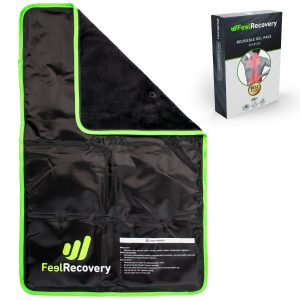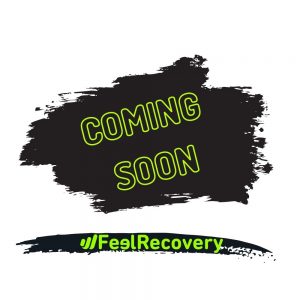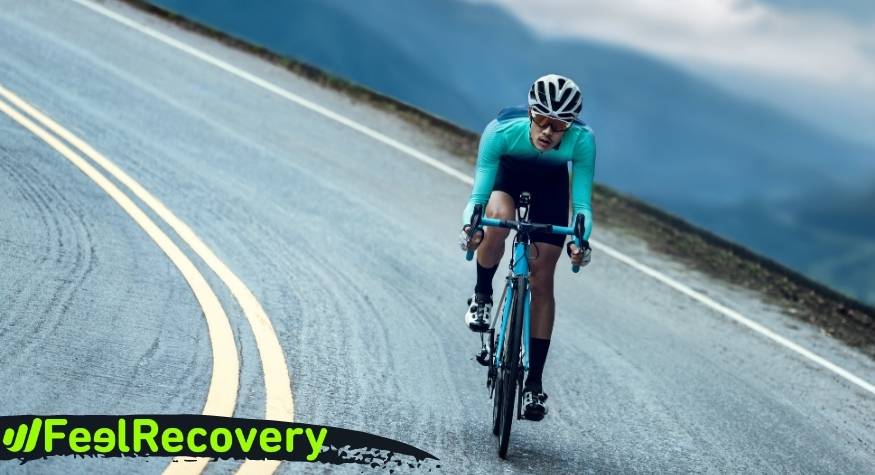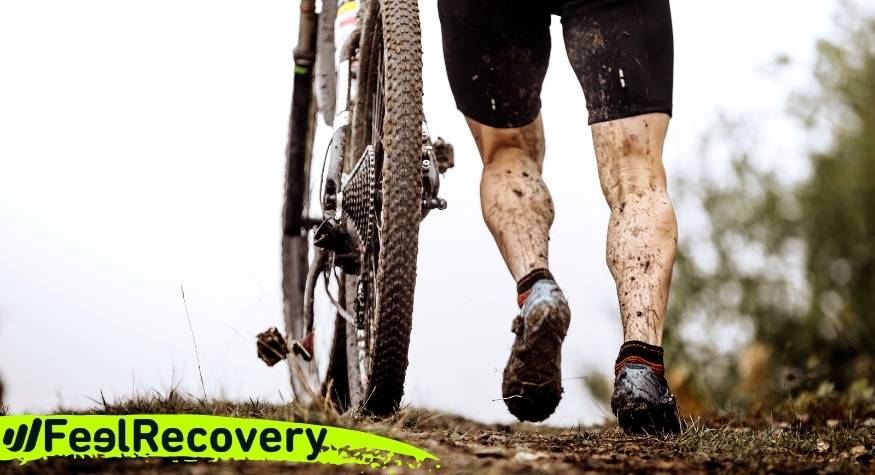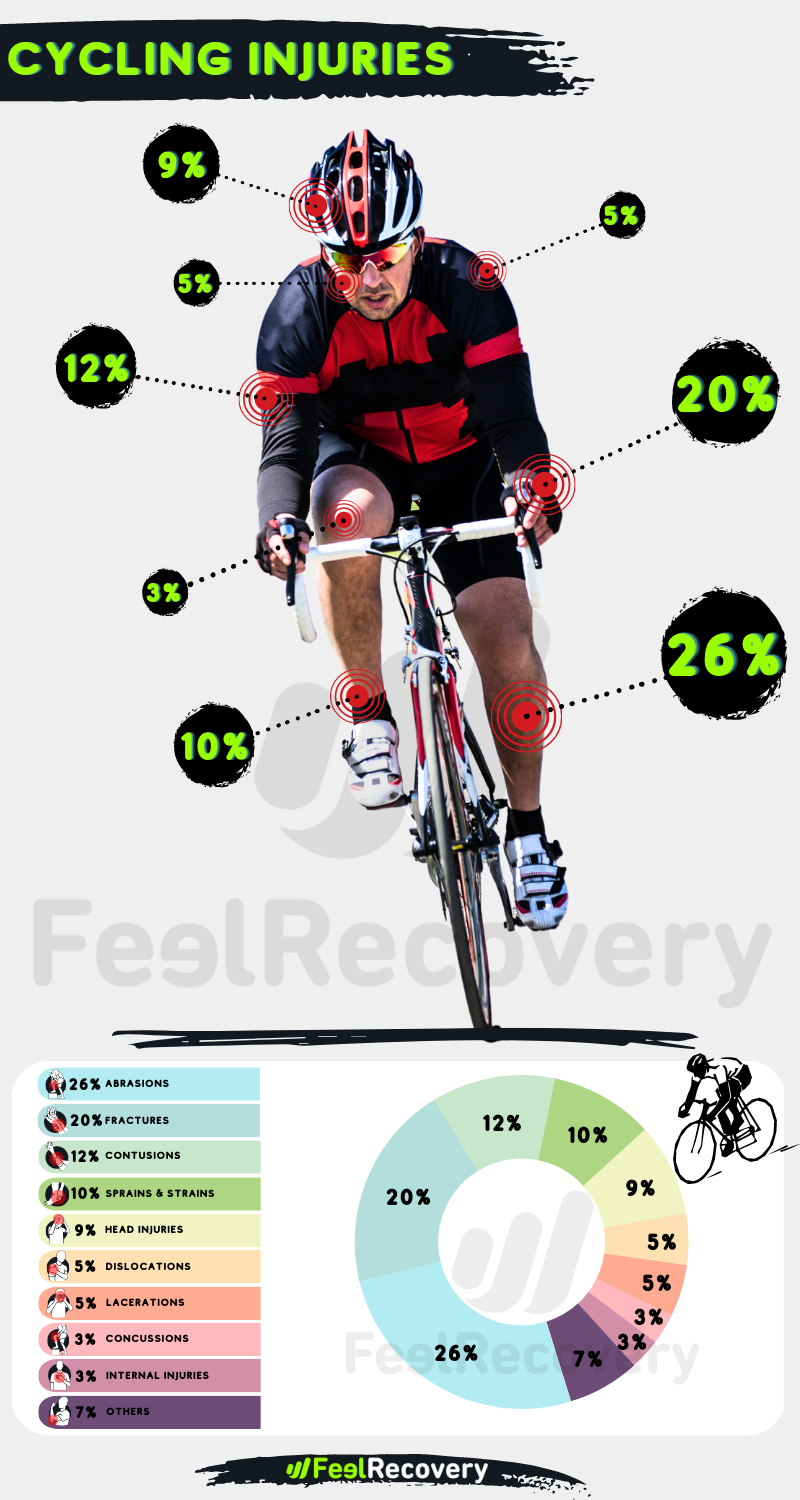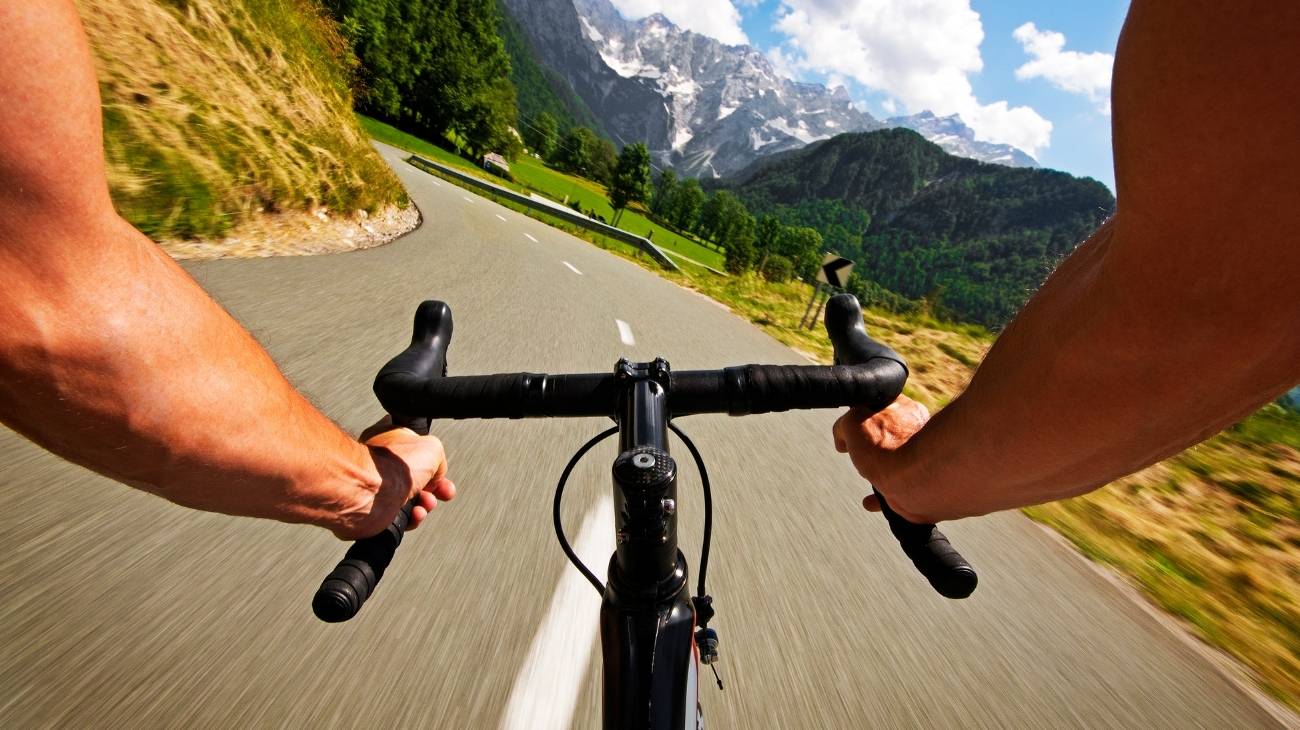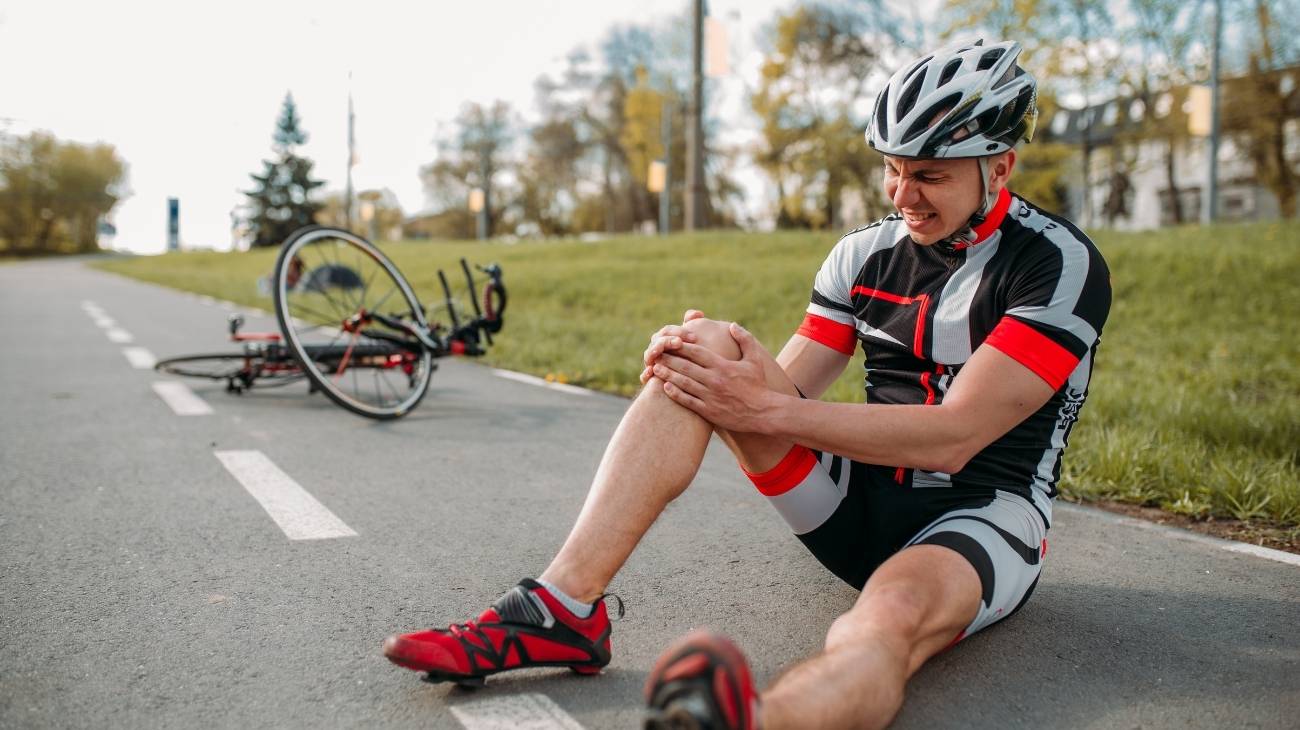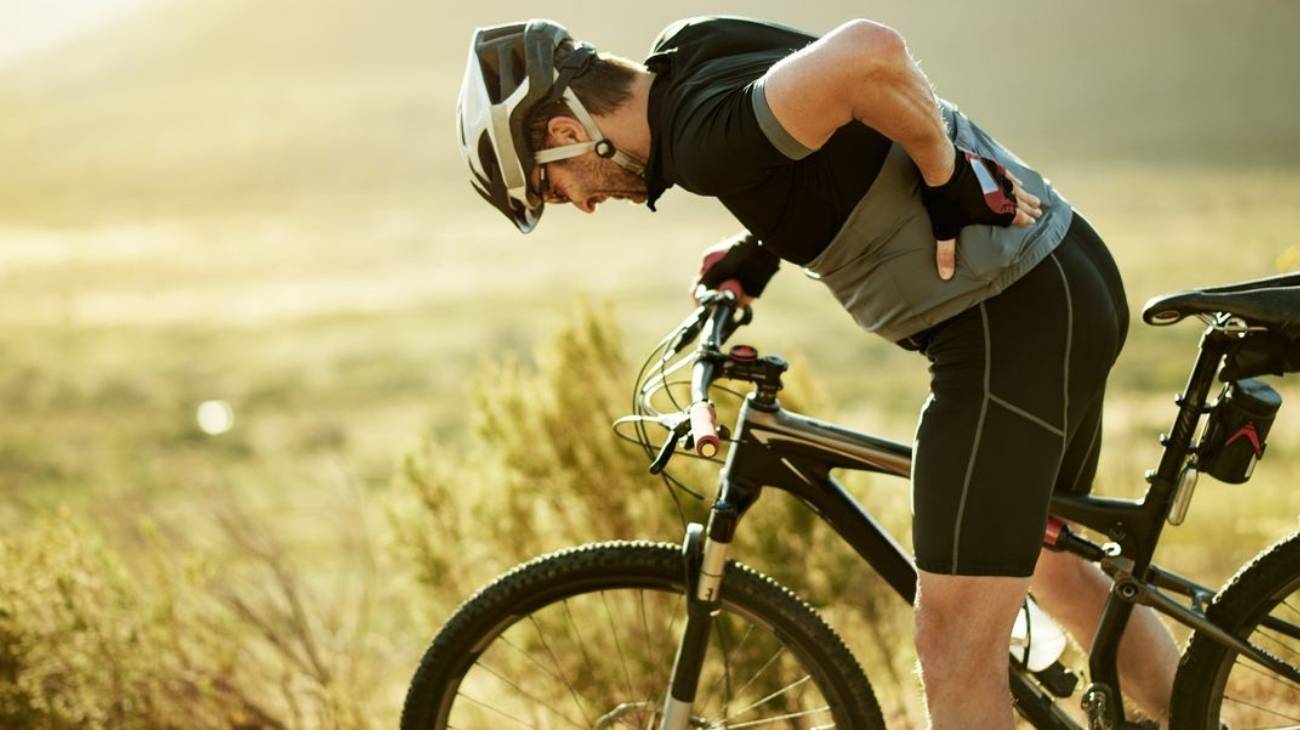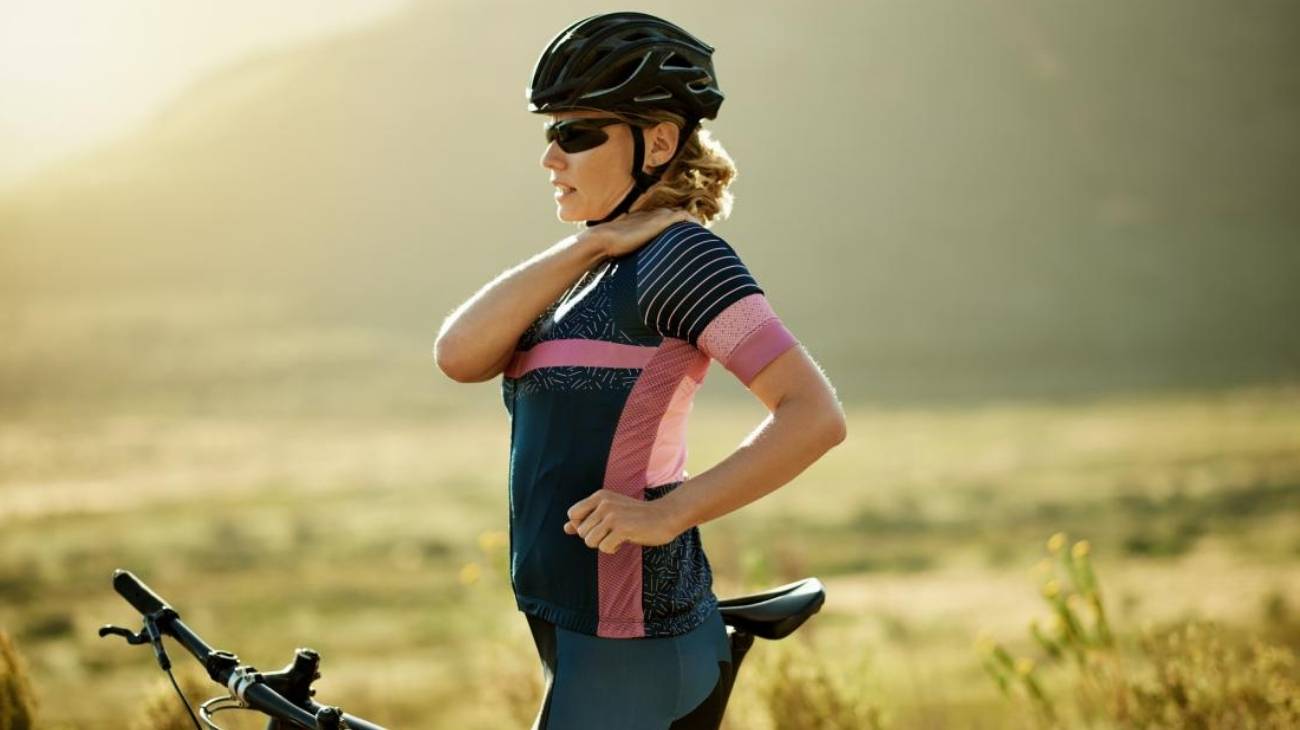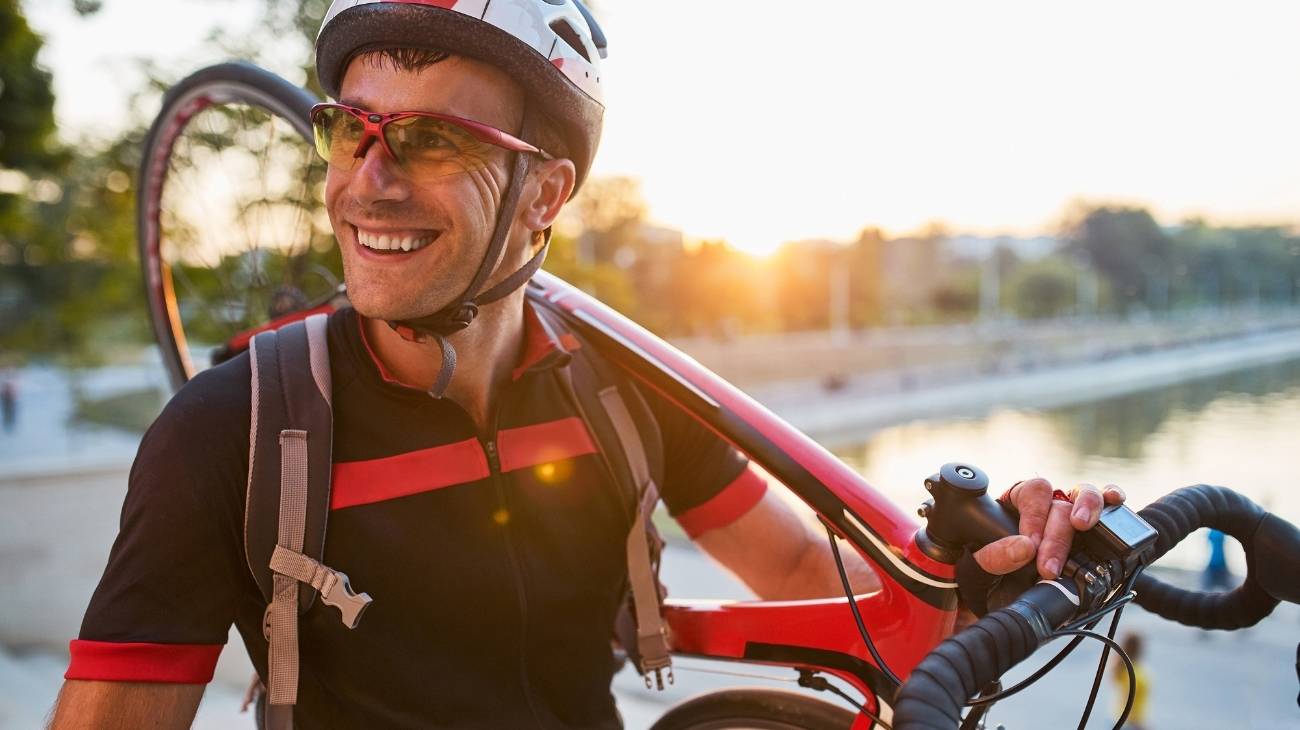What professional cyclist doesn't want to be in the Tour de France? It's like a mountaineer's desire to reach Mount Everest. Cycling is one of the most popular sports and one of the sports that deserves the most care because of possible ailments and silent aches and pains.
Without a fall, serious cycling injuries are unlikely to occur. However, here is a list of the most common aches and pains in the sport. We will tell you how to prevent injuries and how to apply the PRICE therapy as a form of first aid.
What are the most common types of injuries and pains in cyclists?
Whether you want to become a professional or simply want to ride tough cycling routes and sections, you need to be aware of the many injuries you can sustain on your cycling journey.
Shoulder and arm injuries
Although it may seem like a leg-only sport, the reality is that the shoulders and arms are under constant tension due to the posture we take on the bike. This obviously generates injuries over time, among which we can highlight:
- Shoulder tendonitis: Occurs when a tendon becomes inflamed or irritated due to the accumulation of wear and tear to which it is subjected. Due to poor cycling position, there may be micro ruptures and necrosis of the tendons that are connected to the shoulder. It affects the long portion of the biceps brachii and the rotator cuff, which in turn is composed of four muscles, supraspinatus, infraspinatus, teres minor and subscapularis. The cyclist should always be aware of the height of the saddle and handlebars to ensure that he/she is sufficiently comfortable for long rides.
- Shoulder dislocation: This occurs when the arm bone moves out of its typical place, this can be partial or total. In cycling it is often partial, and only occurs from a fall. Many athletes recover their activity within a few days, but it is important to be aware of the signs to address the injury as soon as possible. In these cases it is best not to move the affected area and to see a sports doctor as soon as possible.
- Frozen shoulder: Its clinical term is adhesive capsulitis and is an injury that causes stiffness with pain in the joint. Like tendonitis, it occurs in cycling because too much stress is placed on the joint, causing it to swell. Symptoms start gradually, but worsen over days if left untreated. If left untreated, a good recovery can take more than three years.
- Nerve impingement: Occurs when too much pressure is put on a nerve by muscles and other tissues, which can be caused by holding a single position for a long bike ride, especially on climbs where we need to be more tense. Although we are talking about the shoulder, it also occurs in the arms and legs. The pressure alters the nerve function, causing pain, tingling and numbness. Be aware of decreased sensation in the shoulder.
- Hand overload: The muscles of the hands carry much of a cyclist's weight. For several hours, the hands must remain in one position on the handlebars, which leads to muscle fatigue. Although the tendons can withstand extremes, cycling challenges their strength and causes them to swell. This same overload occurs in the fingers and is most common in mountain biking.
- Carpal Tunnel Syndrome: This is a dreaded injury for many cyclists because it takes a long time to make a successful recovery. It is a nerve entrapment due to compression of the nerve as it passes through the carpal tunnel in the wrist. The cyclist loses sensation in the thumb, index and middle fingers. Its onset is silent because it starts as a tingling while pedalling and ends when getting off the bike, then attacks the person at any time of his life.
Lower back and lumbar injuries
Just like the shoulders and arms, the lower back and lumbar area is under constant tension which accumulates over time and generates various ailments. Among the most common we can highlight:
- General pain: If this is the first or second time you feel pain in your lower back, it may be due to the height of the handlebars. Good cycling posture should be enough to eliminate the pain. You could try adjusting the saddle and handlebars to levels where your body feels comfortable. By doing so, it shouldn't take long for you to notice the change in your favour. Otherwise, we could be dealing with a more complex injury.
- Muscle Exhaustion: The muscles in your legs become exhausted from constant pedalling in training and competition, and that wear and tear eventually leads to back pain. Why do you need to know this? Because you may feel pain and think the source is there, when in fact it's in your legs. Remember that there are muscles and nerves connected to each other. When the hamstrings and calf muscles become fatigued, the cyclist unconsciously increases the angle of the back tilt. In novice cyclists, the reason for this fatigue is because they are not using the type of bike that suits their build.
- Spinal deviation: The back is a vulnerable area and the more years you spend on a bike, the greater the long-term damage. Cyclists tend to overload the upper body, which leads to cervical or trapezius contractures. The long-term consequence is a slight deviation of the spine. Overloading of the lower body leads to perineal injuries due to long hours in the saddle.
Knee and leg injuries
As is to be expected, the legs and especially the knees are the most demanding limbs in the world of cycling. That's why you should keep them in optimum condition to avoid injuries such as the following:
- Joint overload: The way a cyclist pedals affects the function of the knee. In the long term, tendinitis becomes a chronic problem if pedalling is not perfected. During knee flexion, the tibia sometimes rotates inwards in the wrong way and external rotation is cancelled out. This movement, which is mechanical, leads to wear and tear and inflammation.
- Inflammation of the hamstrings: At the back of the knee there are hamstrings, soleus and gastrocnemius muscles, any of which can cause excessive extension, leading to inflammation. The fault is the height of the saddle, remember that cycling requires the athlete to be in a single position for several hours and that ends up taking its toll on the body.
- Inflammation of the external rotators: These are tendons that make up the subtalar joint at the back of the foot, between the talus and the calcaneus. The movement of climbing the pedal is the trigger for this specific injury, as the tendon is overloaded when the legs are poorly positioned on the pedals.
- Achillestendinopathy : The Achilles tendon is at the back and lower part of the calf, attached to the heel. Bike set-up is the key factor in this injury, so you must learn how to adjust all the components of your bike. Although having a short Achilles tendon, and having asymmetry in both legs, increases the possibility of having this ailment.
Best products for cycling injury recovery
Bestseller
-
2 Calf Compression Sleeve (Black/Gray)
£17,50 -
2 Calf Compression Sleeve (Green/Navy)
£17,50 -
2 Calf Compression Sleeve (Pink/Bordeaux)
£17,50 -
2 Knee Compression Sleeve (Black/Gray)
£17,50 -
2 Knee Compression Sleeve (Green/Navy)
£17,50 -
2 Knee Compression Sleeve (Pink/Bordeaux)
£17,50 -
2 Patella Knee Strap (Black/Gray)
£12,95 -
2 Patella Knee Strap (Green/Navy)
£12,95 -
2 Patella Knee Strap (Pink/Bordeaux)
£12,95 -
2 Thigh Compression Sleeve (Black/Gray)
£17,50 -
2 Thigh Compression Sleeve (Green/Navy)
£17,50 -
2 Thigh Compression Sleeve (Pink/Bordeaux)
£17,50 -
Acupressure Mat and Pillow (Black/Gray)
£44,95 -
Acupressure Mat and Pillow (Green/Navy)
£44,95 -
Acupressure Mat and Pillow (Pink/Bordeaux)
£44,95 -
Acupressure Pillow (Black/Gray)
£21,52 -
Acupressure Pillow (Green/Navy)
£21,52 -
Acupressure Pillow (Pink/Bordeaux)
£21,52 -
Foot Massage Roller for Plantar Fasciitis (Black)
£17,50 -
Foot Massage Roller for Plantar Fasciitis (Green)
£17,50 -
Foot Massage Roller for Plantar Fasciitis (Pink)
£17,50 -
High Density Foam Roller for Muscle (Black/Gray)
£21,95 -
High Density Foam Roller for Muscle (Green/Navy)
£21,95 -
High Density Foam Roller for Muscle (Pink/Bordeaux)
£21,95 -
Ice Massage Roller Ball (Black)
£34,95 -
Ice Massage Roller Ball (Green)
£34,95 -
Ice Massage Roller Ball (Pink)
£34,95 -
Microwaveable Wheat Bag for Pain Relief (Hearts)
£17,50 -
Microwaveable Wheat Bag for Pain Relief (Oxford)
£17,50 -
Microwaveable Wheat Bag for Pain Relief (Sport)
£17,50 -
Pack 2 in 1: Foam Roller High + Soft Density (Black/Gray)
£24,95 -
Pack 2 in 1: Foam Roller High + Soft Density (Green/Navy)
£24,95 -
Pack 2 in 1: Foam Roller High + Soft Density (Pink/Bordeaux)
£24,95 -
Soft Density Foam Roller for Recovery (Black)
£24,95 -
Soft Density Foam Roller for Recovery (Green)
£24,95 -
Soft Density Foam Roller for Recovery (Pink)
£24,95 -
Sport Compression Socks (1 Pair) (Black/Gray)
£17,50 -
Sport Compression Socks (1 Pair) (Green/Navy)
£17,50 -
Sport Compression Socks (1 Pair) (Pink/Bordeaux)
£17,50 -
Trigger Point Massage Stick (Black)
£12,95 -
Trigger Point Massage Stick (Green)
£12,95 -
Trigger Point Massage Stick (Pink)
£12,95
How to prevent injuries when cycling?
Experts say that there are two types of cyclists: those who fall and those who are going to fall. We focus on cyclists who have not fallen, as their injuries can be prevented with these recommendations:
- Warm up well: As you are looking for a perfect warm up, here are some ways to warm up in general before riding a bike. Do dynamic strides, with wide movements for greater mobility. Then do push-ups, which will help strengthen your shoulders and chest. Lean your body forward, even with moderate weight on your back, the movement will help strengthen your lower back. Remember that this is a gentle movement.
- Finish your workouts with a cool down: Spend a few minutes cycling for recreation, to take a leisurely ride and appreciate what is around you. This will always be an ideal way to cool down your body and allow it to be ready for a new workout. As a second option, walk. You can do this by carrying your bike or leave it where it is sheltered. You can walk for 10 to 15 minutes, as you want to get your body back to its natural state.
- Good nutrition and hydration: Carbohydrates should be the basis of any cyclist's diet, this component helps to maintain blood glucose levels during exercise. This way you achieve a good distribution of energy throughout the body. What foods have carbohydrates? Fruits, pulses, cereals, bread, pasta and root vegetables. A good cyclist knows that he should drink water every 20 minutes and should not wait until he is thirsty. When thirst arrives it is because the body begins to be dehydrated and it is a state that we must avoid because it affects performance.
- Improve your fitness: It is true that having thick legs is related to greater strength, but this thickness may be due to being overweight and that is a weakness in this sport. There is no formula for what a cyclist's build should be, as every body is different and a short person can ride harder and longer than a tall cyclist. The Muscle Mass Index (BMI) will be the deciding factor as to whether or not you are physically ready for the Tour de France, this is calculated by dividing a person's weight by their height in metres.
- Sports massage: It should always be done preventively, as few injuries can be treated with a sports massage. When the leg muscles are nested, this is a good reason for a specific massage. With massages it is desired that the accumulated energy in the painful area flows better. It is also known that there are massages that rid the body of toxins, this is also valid in cycling.
- Use of hot and cold therapies: These are used as first aid for injuries. Ice or cold compresses are applied when you want to reduce pain or increase blood flow, respectively. In general, using ice reduces the amount of blood circulating in the affected area and reduces inflammation, as well as minimising bruising caused by trauma. In turn, when there is a short break, cyclists opt for thermal blankets or warm compresses to keep their body in shape and continue pedalling.
- Use of compression garments: When to use them? When you want to increase muscle performance and control body temperature during long hours of training and competition. Under no circumstances should they be used to hide an injury or ailment, as this can be complicated by the demands of cycling. There are sleeves, socks, shorts and wrist braces that perform the same function, but on specific areas of the body.
- Use of acupressure therapies: This therapy is very similar to acupuncture, but does not use needles in its application. Instead of needles, acupressure uses the fingers and palms of the hands to touch specific points on the body to better distribute the energy stored in that area. The energy is actually muscle tension that, if managed, is more functional than any "relaxing" therapy. Although there are mats and mechanisms to apply acupressure to the body, it is best to have a certified therapist perform it.
- Use of thermotherapy and cryotherapy: Thermotherapy aims to lower blood pressure which is beneficial to the heart. This procedure should be monitored by a specialist, and should not be abused. It also has a sedative and relaxing effect on the whole body, and minimises the likelihood of muscle spasms. Cryotherapy, on the other hand, is a whole-body therapy that is generated by a cloud of nitrogen vapour and reaches temperatures of -180°c for up to three minutes. It increases the arches of mobility, lowers chronic joint pain and increases the secretion of oxidant-catalysing enzymes.
- Use of good equipment: Let's start with the jersey, which is made of synthetic, breathable fabric and should allow air to escape, especially if the cyclist is at the top of the bike. A jacket can also be worn to protect the cyclist from the rain and the cold, damp air. As a cyclist spends a lot of time sitting down, the best protection is a bib shorts, a kind of padding that is integrated into the shorts and matches the saddle for comfort and protection. As for shoes, there is a type of shoe for each type of professional cycling. These are shaped and fastened to fit each type of pedal, depending on the type of cycling. When the footwear does not adapt well to the athlete's foot, annoying blisters are generated.
How to apply the RICE therapy to treat first aid injuries in cycling?
This method is applied both in training and in competition, taking into account that the affected area must be checked by a sports doctor. The PRICE therapy is an update of RICE, as it is better known worldwide.
- Protection: In the event of a fall, the best thing to do is not to touch the affected area too much; an elastic bandage should be used so that it fits the wrist, elbow, knee or ankle, which are usually the parts that get hurt the most. If it is in training, an orthosis is useful when you know that a joint may fail and you already have the foresight to have this tool.
- Rest: You should stop pedalling immediately and lie down if it is a leg injury. This is valuable time while allowing the body's tissues to regenerate themselves if it is a minor injury. In cases such as cramps and numbness, you can walk slowly only if the specialist has instructed you to do so.
- Ice: It has an analgesic and anti-inflammatory effect on the human structure. In training, ice is more likely to be available for pain relief. There are sprays that serve as painkillers, but the classic cold gel pack is an important element to speed up recovery.
- Compression: With the help of an elastic bandage, the affected area is covered to keep pressure on it and help the swelling go down. Often, cyclists have a first aid kit, in them there should be elastic bandages for injuries.
- Elevation: The idea is to raise the arm or leg above the level of the heart, thus lowering the blood flow and helping the swelling and pain to subside.
References
- Cohen, G. C. (1993). Cycling injuries. Canadian Family Physician, 39, 628. https://www.ncbi.nlm.nih.gov/pmc/articles/PMC2379777/
- Wanich, T., Hodgkins, C., Columbier, J. A., Muraski, E., & Kennedy, J. G. (2007). Cycling injuries of the lower extremity. JAAOS-Journal of the American Academy of Orthopaedic Surgeons, 15(12), 748-756. https://journals.lww.com/jaaos/Abstract/2007/12000/Cycling_Injuries_of_the_Lower_Extremity.8.aspx
- Mellion, M. B. (1991). Common cycling injuries: management and prevention. Sports Medicine, 11, 52-70. https://link.springer.com/article/10.2165/00007256-199111010-00004
- Mulvaney, C. A., Smith, S., Watson, M. C., Parkin, J., Coupland, C., Miller, P., ... & McClintock, H. (2015). Cycling infrastructure for reducing cycling injuries in cyclists. Cochrane database of systematic reviews, (12). https://www.cochranelibrary.com/cdsr/doi/10.1002/14651858.CD010415.pub2/full
- Sanner, W. H., & O'Halloran, W. D. (2000). The biomechanics, etiology, and treatment of cycling injuries. Journal of the American Podiatric Medical Association, 90(7), 354-376. https://japmaonline.org/view/journals/apms/90/7/87507315-90-7-354.xml
- Kotler, D. H., Babu, A. N., & Robidoux, G. (2016). Prevention, evaluation, and rehabilitation of cycling-related injury. Current sports medicine reports, 15(3), 199-206. https://journals.lww.com/acsm-csmr/Fulltext/2016/05000/Prevention,_Evaluation,_and_Rehabilitation_of.18.aspx
- Aldred, R. (2016). Cycling near misses: Their frequency, impact, and prevention. Transportation Research Part A: Policy and Practice, 90, 69-83. https://www.sciencedirect.com/science/article/pii/S0965856416303639
- Kronisch, R. L. (1998). Mountain biking injuries: fitting treatment to the causes. The Physician and sportsmedicine, 26(3), 64-70. https://www.tandfonline.com/doi/abs/10.1080/00913847.1998.11440349
- Hollingworth, M. A., Harper, A. J., & Hamer, M. (2015). Risk factors for cycling accident related injury: The UK Cycling for Health Survey. Journal of Transport & Health, 2(2), 189-194. https://www.sciencedirect.com/science/article/abs/pii/S221414051500002X
- Embree, T. E., Romanow, N. T., Djerboua, M. S., Morgunov, N. J., Bourdeaux, J. J., & Hagel, B. E. (2016). Risk factors for bicycling injuries in children and adolescents: a systematic review. Pediatrics, 138(5). https://publications.aap.org/pediatrics/article-abstract/138/5/e20160282/60425/Risk-Factors-for-Bicycling-Injuries-in-Children















































